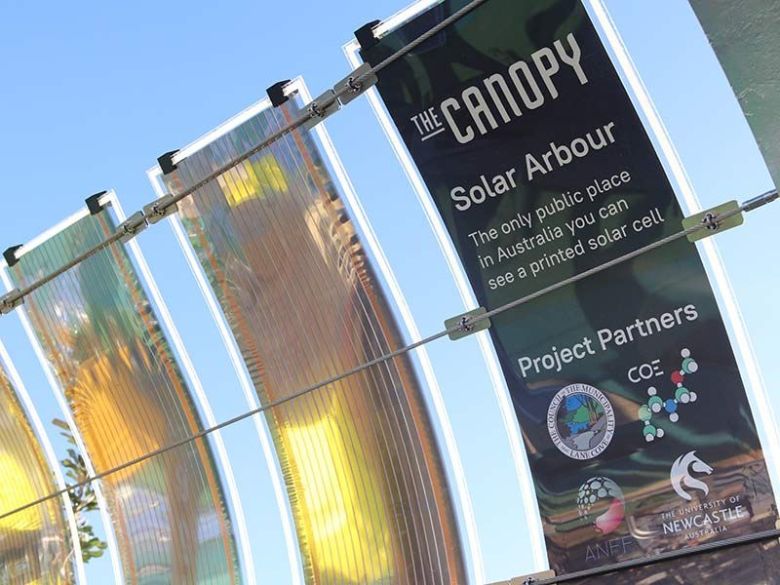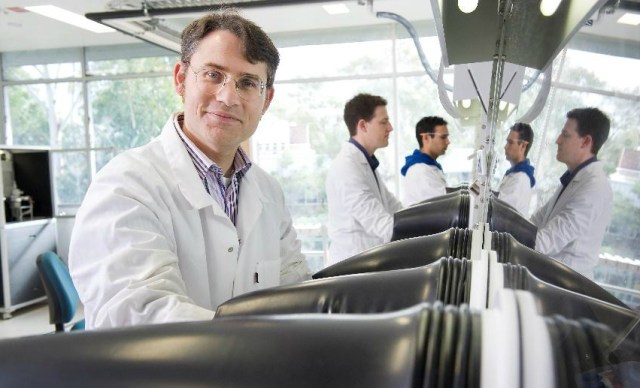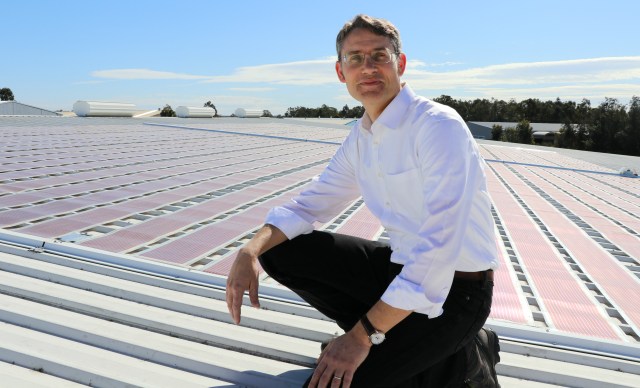
The University of Newcastle is showcasing its printed solar panels in a public debut as the technology nears commercial readiness.
Located within Lane Cove Council’s vibrant new urban space ‘The Canopy’ in Sydney’s north, the demonstration places science from behind sealed lab doors in an ordinary environment.
Creator of the organic printed solar material, physicist and professor Paul Dastoor from the University’s Faculty of Science said his team was excited to take their ‘science to the streets’ in what represented significant progress toward commercial availability of the material.
The renewable energy tech, which is ultra-light-weight, ultra-flexible, recyclable and cheap to manufacture, is of similar thickness and appearance to a chip packet, and is manufactured using conventional printers.
“Globally, there has been so few of these installations, we know very little about how they perform in a public setting,” Professor Dastoor said.
“This installation is the next critical step in accelerating the development and commercialisation of this technology. It presents a new scenario for us to test performance and durability against a range of new challenges.”
Professor Dastoor said global interest in printed solar was the highest he had ever witnessed and that an advanced manufacturing facility for printed solar in NSW was the imminent goal for his team.
“We have a world-class manufacturing facility at the University’s Newcastle Institute for Energy and Resources (NIER), which has been generously supported by the Australian National Fabrication Facility (ANFF). This print facility can manufacture hundreds of metres of material a day, however we’re now reaching the point where we need to significantly scale this level of production,” he said.
“This technology will disrupt and revitalise the contracting print industry. Printed solar is manufactured on conventional printers – our lab-scale system previously manufactured wine labels.”
According to Professor Dastoor, printed solar is cheap to manufacture, at a production cost of less than $10 per square metre and rapid to produce, with commercial scale equipment capable of producing kilometres of material a day.
“No other renewal energy technology can be manufactured as quickly. The low cost and speed at which this technology can be deployed is exciting as we need to find solutions, and quickly,” Professor Dastoor said.
With over 99 per cent of the panels consisting of PET, the material can be recycled – a distinct advantage over traditional silicon panels.
“We’re currently investigating recycling processes for this material. Our hope is that we can separate the outer PET layers and reuse them to make new panels with minimal processing,” he mentioned.
Professor Dastoor added that he is hopeful that the public installation would prompt further discussion on the subject of energy as the Federal Government considered submissions to its technology investment roadmap.
“The government is seeking to bring down carbon emissions over the next 30 years and the community has been very engaged on this subject. Globally, there are many research groups like ours working on sustainable energy technologies and now, via the technology investment roadmap, is our opportunity to ensure we invest in and deliver clever solutions,” he said.
Comment below to have your say on this story.
If you have a news story or tip-off, get in touch at editorial@sprinter.com.au.
Sign up to the Sprinter newsletter



